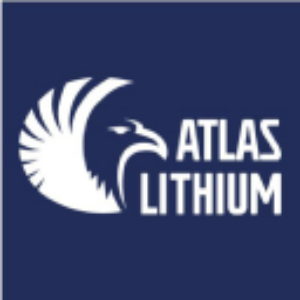Atlas Lithium's Critical Minerals Subsidiary Delivers Exceptional Rare Earths Grades and Premium Graphite Concentrate in Initial Reporting
Rhea-AI Summary
Atlas Lithium (NASDAQ: ATLX) announced significant results from its 30%-owned subsidiary, Atlas Critical Minerals Corporation (OTCQB: JUPGF). The subsidiary's Technical Report Summaries revealed exceptional mineralization at two key projects in Brazil:
The Alto do Paranaíba Project demonstrated outstanding rare earths grades up to 28,870 ppm TREO and 23.2% TiO2. Surface sampling showed 608 samples exceeding 1,000 ppm TREO, while initial drilling yielded significant intercepts including 12 meters @ 5,961 ppm TREO.
The Malacacheta Project achieved premium graphite results with concentrate grades up to 96.6% graphitic carbon. The projects are strategically located in Brazil, which hosts the world's second-largest rare earth and graphite deposits, positioning ACM advantageously in the critical minerals sector.
Positive
- High-grade rare earths mineralization with exceptional grades up to 28,870 ppm TREO
- Premium graphite concentrate quality achieving 96.6% graphitic carbon
- Strategic location in Brazil with access to world's second-largest rare earth and graphite deposits
- Extensive mineral rights portfolio covering 218,000 hectares across multiple critical minerals
- Diversification beyond lithium creates additional potential shareholder value
Negative
- Early-stage exploration results without defined mineral resources
- Only 30% ownership stake in the subsidiary limits direct benefit to Atlas Lithium shareholders
News Market Reaction 2 Alerts
On the day this news was published, ATLX declined 2.87%, reflecting a moderate negative market reaction. Our momentum scanner triggered 2 alerts that day, indicating moderate trading interest and price volatility. This price movement removed approximately $3M from the company's valuation, bringing the market cap to $109M at that time.
Data tracked by StockTitan Argus on the day of publication.
Atlas Lithium's Diversified Critical Minerals Portfolio Unlocks Multiple Value Drivers Amid Rising Geopolitical Significance
Boca Raton, Florida--(Newsfile Corp. - August 25, 2025) - Atlas Lithium Corporation (NASDAQ: ATLX) ("Atlas Lithium" or "Company"), a leading lithium development company advancing towards production at its flagship Neves Project, today announced exceptional results from its
The Reports were prepared by SGS Canada Inc. ("SGS"), a premier mineral evaluation company. Under Regulation S-K 1300, Marc-Antoine Laporte and Yann Camus from SGS are Qualified Persons for the Alto do Paranaíba Project (rare earths and titanium), and Marc-Antoine Laporte and Rohan Millar from SGS are Qualified Persons for the Malacacheta Project (graphite). The Reports have been filed with the Securities and Exchange Commission and can also be accessed at ACM's website (www.atlascriticalminerals.com).
The initial results presented in the Reports are highly encouraging for Atlas Lithium's measured diversification beyond lithium into additional critical minerals essential for electrification and defense applications. This strategic positioning is expected to create an additional layer of shareholder value over time while strengthening the Company's position in the global energy transition ecosystem.
Geopolitical Significance Drives Critical Minerals Strategy
In today's evolving geopolitical landscape, rare earth elements in particular have emerged as essential components for national security and technological sovereignty. With global rare earths production and processing capacity heavily concentrated, securing diversified supply chains has become a strategic imperative for Western nations. This concentration has created significant vulnerabilities which highlighted the critical importance of developing reliable, geographically diverse sources for these vital materials.
"Atlas Critical Minerals' remarkable initial results corroborate the strategic value of our diversification approach," stated Marc Fogassa, Chairman and CEO of Atlas Lithium. "While we remain laser-focused on advancing the Neves Lithium Project to production, our subsidiary's achievements in rare earths and graphite create the opportunity for meaningful additional shareholder value. These critical minerals are not just essential for the energy transition - they are fundamental to national security and technological independence."
Alto do Paranaíba Project Delivers Outstanding Rare Earths and Titanium Results
Atlas Critical Minerals' Alto do Paranaíba Project, spanning 16 mineral rights covering 27,734 hectares in Minas Gerais State in Brazil, has demonstrated consistent high-grade mineralization for both rare earths and titanium. Highlights of its ongoing exploration program include:
Surface Sampling Highlights (809 samples analyzed):
608 samples exceeded 1,000 ppm TREO
121 samples exceeded 3,000 ppm TREO
Peak result of 28,870 ppm TREO with
16.5% TiO₂205 samples exceeded
10% TiO₂
Select Drilling Intercepts from Initial 144-meter Auger Program:
DHTI-001: 12 meters @ 5,961 ppm TREO and
13.3% TiO₂DHTI-002: 6 meters @ 7,729 ppm TREO and
12.5% TiO₂DHCA-00001: 4.3 meters @ 4,706 ppm TREO and
15.1% TiO₂
Malacacheta Graphite Project Achieves Premium Results
Atlas Critical Minerals' Malacacheta Project, covering 1,258 hectares in Minas Gerais State in Brazil, has confirmed large-flake graphite mineralization with strong metallurgical results on initial testing. Highlights of its ongoing exploration program include:
Final concentrate grades of up to
96.5% total graphitic carbonPremium large-flake fraction achieved
96.6% graphitic carbonSurface samples contained up to
15.4% graphitic carbon
Brazil: The Strategic Advantage
Brazil's position as a geopolitically stable country with substantial deposits of critical minerals provides ACM with significant competitive advantages. In particular, the country hosts the world's second-largest rare earth and graphite deposits, demonstrating the exceptional strength of its geology for these highly sought-after critical minerals.
ACM controls over 218,000 hectares of mineral rights across rare earths, titanium, graphite, uranium, copper, and nickel - across multiple states in Brazil thus providing extensive optionality within several proven geological formations.
About Atlas Lithium Corporation
Atlas Lithium Corporation (NASDAQ: ATLX) is a lithium development company focused on advancing its Neves Project to production. The Neves Project's Definitive Feasibility Study demonstrates excellent economics with a
Safe Harbor Statement
This press release contains forward-looking statements within the meaning of Section 27A of the Securities Act of 1933, as amended, and Section 21E of the Securities Exchange Act of 1934, as amended. Forward-looking statements are based upon the current plans, estimates and projections of Atlas Lithium and its subsidiaries and are subject to inherent risks and uncertainties which could cause actual results to differ from the forward-looking statements. Such statements include, among others, those concerning market and industry segment growth and demand and acceptance of new and existing products; any projections of production, reserves, sales, earnings, revenue, margins or other financial items; any statements of the plans, strategies and objectives of management for future operations; any statements regarding future economic conditions or performance; uncertainties related to conducting business in Brazil, as well as all assumptions, expectations, predictions, intentions or beliefs about future events. Therefore, you should not place undue reliance on these forward-looking statements. The following factors, among others, could cause actual results to differ from those set forth in the forward-looking statements: Atlas Lithium's ability to successfully assemble and begin operations of its modular plant; reaching estimated production, development plans and cost estimates for the Neves Lithium Project as reported in the Definitive Feasibility Study (the "DFS"); discrepancies between actual and estimated mineral reserves and mineral resources, between actual and estimated development and operating costs, and between estimated and actual production; results from ongoing geotechnical analysis of projects; business conditions in Brazil; general economic conditions, geopolitical events, and regulatory changes; availability of capital; Atlas Lithium's ability to maintain its competitive position; manipulative attempts by short sellers to drive down our stock price; and dependence on key management.
Additional risks related to the Company and its subsidiaries are more fully discussed in the section entitled "Risk Factors" in the Company's Form 10-K filed with the Securities and Exchange Commission (the "SEC") on March 28, 2025, and in the Company's Form 10-Q filed with the SEC on August 4, 2025. Please also refer to the Company's other filings with the SEC, all of which are available at www.sec.gov. In addition, any forward-looking statements represent the Company's views only as of today and should not be relied upon as representing its views as of any subsequent date. The Company explicitly disclaims any obligation to update any forward-looking statements.
Investor Relations
Gary Guyton
Vice President, Investor Relations
+1 (833) 661-7900
gary.guyton@atlas-lithium.com
https://www.atlas-lithium.com/
@Atlas_Lithium

To view the source version of this press release, please visit https://www.newsfilecorp.com/release/263711







